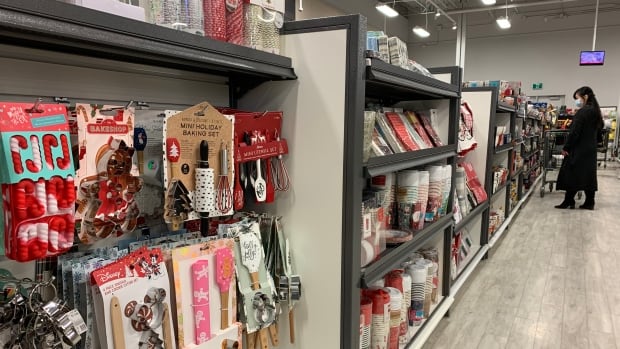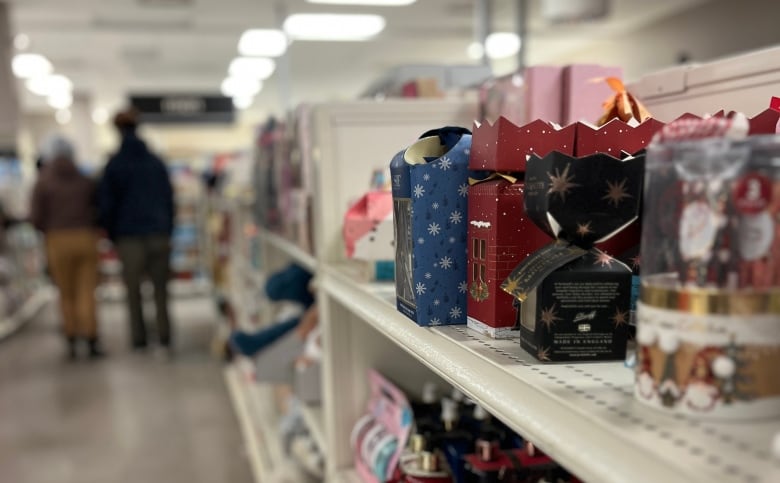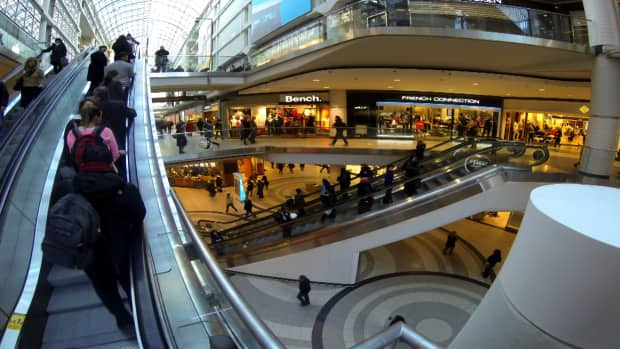
Cost of Living5:10Why retailers want us to indulge our impulses
We’ve all been there. You’ve gone out shopping, picked up everything on your list, and are beelining it for the cashier.
Unfortunately it’s not a straight line to the checkout. Instead, you’re led through a winding corridor full of tempting and usually small items for you to pick up along the way.
You probably weren’t looking to buy a whole bag of maple caramel squares. But they sure look good, now that you’re staring right at them.
The modern checkout aisle has become one of retailers’ most important tools to fuel impulse buying — especially during the holiday season — and it’s been carefully designed to make its wares impossible to resist.
“They can make the checkout really quick, allow you to check out right away. Instead, they make this maze to keep you in the store as long as possible,” said Ying Zhu, a marketing professor at UBC’s Okanagan Campus.
A meta-analysis of research dating from 2012 all the way back to the 1950s found that impulse purchases including but not limited to the checkout aisle made up anywhere from 40 to 80 per cent of shopper’s spending, depending on the store or product category.
And, according to a 2021 report from marketing research company IRI, Americans spent $6 billion US (more than $8 billion Cdn) on checkout purchases in 2020.
WATCH | Companies adopt wide range of ways to seduce you to buy stuff you don’t need:
Companies adopt wide range of ways to seduce you to buy stuff you don’t need
A key strategy to encourage impulse buying focuses on so-called “strike points” — certain parts of the store that get the most traffic or eye contact — according to Shawn Schmidt, a professor who teaches retail merchandising at Seneca College in Toronto.
Those strike points could include the end caps — the shorter ends of the aisles that see traffic in multiple directions — and the shelves that meet most people’s eye level.
“Suppliers pay money to the retailer, especially in a grocery store environment, to have their product featured there,” he said.
The checkout aisle “seems to be becoming a much more normal thing” in Canada, said Schmidt — from Winners to HomeSense, sometimes with a selection of goods entirely separate from the rest of the aisles and shelves.
Low price, high markup
Marianne Wright of Brighton, Ont., says she’s usually immune to the temptations of the checkout aisle.
“Normally, I don’t really even notice them, if I’m being honest. I’m pretty laser-focused when I’m shopping,” she said.
That changes during the Christmas holiday season, though, when they offer the perfect stocking stuffer-style gifts.
“At Indigo, I picked up some novelty chip clips for my husband. They’re shaped like little nostrils,” she said. She also bought some fidget poppers for her kids.

When Wright does look for stocking stuffers, she keeps to a $10 per item limit for anything she picks up from the checkout aisle.
Schmidt says the perfect price point for these items is somewhere between the $10 and $20 mark — and many of them can be extremely profitable.
“They have a very low purchase point, but the markup on them is huge,” he said.
‘Hedonic’ products
Wright says that sometimes the most appealing items are the ones she would never expect to see in a given store. One year she remembers finding camping trinkets at a Marshalls department store.
“You’re like, it has no business being here. But my husband and I do a lot of camping,” she said.
Sometimes, the checkout aisle’s unusual assortments make it a store attraction in and of itself.
“Canadian Tire is famous for this. Some of the stuff that you go to Canadian Tire [for] and think, OK, I’m going for hardware. But then next thing you know, you’re in the aisle and there’s chips and chocolates and protein bars,” said Schmidt.
Some of the most popular items you’ll see in the aisle are known as hedonic products. Think hand cream, scented candles, chocolates and other snacks. Zhu says these products can “boost people’s excitement, joyfulness and happiness.”
On the opposite end, relatively mundane items that in theory you were going to buy eventually — batteries, bandages, or a simple cigarette lighter — do well, said Schmidt.
Don’t just stand there, buy something
The simple act of standing in line has its benefits — or drawbacks, depending on your perspective.
Schmidt says that distraction can help calm or distract customers if they’re tired after a long shopping session or frustrated at having to wait in line.
If you’re standing right behind someone who is actively browsing the checkout items and picks one up, it’s likely to influence you to do the same, said Zhu.
We might even be persuaded to pick something up just to avoid an awkward moment of eye contact or small talk with the stranger standing next to us, she added.
“Sometimes people are trying to avoid uncomfortableness,” she said. “There’s strangers around. They don’t know where to put their eyes. [So] they’re just looking at the shelf, and [will] pick up something to make themselves busy.”
The shopping-friend conscience
Wright, who used to work in marketing herself, says she’s not particularly bothered about how retailers juice up the checkout aisle — at least not compared to the myriad other marketing strategies they use elsewhere in stores or other advertising.
“Every single purchasing choice that you make, you’ve been influenced to make it, whether it’s … a recommendation from a friend or from the business, doing really great advertising,” she said.
But if you’re actively trying to avoid making impulse purchases — especially during the holiday season — Zhu says the classic tips and strategies still apply.
Make a list and stick to it. Don’t start shopping if you’re already tired or feeling down. Or, as she does, shop with a friend to help keep those impulses in check.
“Before we go, we’re going to tell each other, if any of us pick up something, the other person will ask, ‘Do you really need this? Are you really going to wear it? Do you think this is a rational buy?'” she said.
